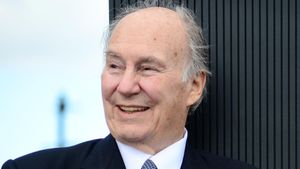The minimum pension for retirees in Russia is set to undergo significant changes starting January 1, 2025. This increase stems from various factors, including the type of pension, the region of residence, and the living wage for pensioners (minimum wage pension). According to the Ministry of Labor, the insurance pension will be indexed by 9.5%, establishing new thresholds and amounts for pensioners nationwide.
Understanding what minimum pension means is key. Although there isn't a strict definition of "minimum pension" across the country, it is primarily defined by the living wage, which varies by region. For example, the living wage for pensioners will play a substantial role in determining how pensions are allocated and supplemented. For those whose pensions fall below this minimum threshold, the government guarantees additional payments to make up the difference.
Now, let's look at the categories of pensions available to Russian citizens. There are primarily four types:
- Insurance Pension: This is granted to individuals who have accumulated sufficient work duration and pension coefficients.
- Social Pension: This pension is intended for individuals who have not met the required work duration.
- State Pension: Aimed at citizens affected by radiation or industrial catastrophes.
- Accrued Pension: Stemming from contributions made by either employers or individuals, currently under moratorium for mandatory replenishment.
Per the latest calculations, the minimum insurance pension, starting from January 2025, will amount to approximately ₽13,278.40. This figure is calculated using the value of the pension coefficient and supplementary payment fixed at ₽8,907.70. Notably, for those unable to survive solely on their pensions, the social pensions have also seen substantial adjustments, forecasting approximately ₽15,456 after a rise of 14.75%.
Another government provision affects the victims of technological catastrophes. The minimum state pension for those impacted will see benefits tallying to 250% of the social pension, equaling approximately ₽38,640 for individuals suffering from radiation sickness. On the other end of the spectrum, the minimum pension will be markedly lower for less populous areas, such as the Kursk region, predicting payouts of about ₽11,456.
Living wage measures vary widely by region, impacting pension calculations considerably. For example, Moscow has set its living wage for pensioners at ₽17,300, whereas the figures drop significantly lower for other areas like the Belgorod and Saratov regions, which report figures around ₽12,811. The government assures compensatory payments to those whose pensions do not meet these established minima.
Communicating active measures taken to improve pension conditions, the government aims to index payments over the years, ensuring they keep pace with valuation rates and inflation figures. Between 2021 and 2025, the minimum insurance pension increased by 63.52%, significantly outpacing the inflation rate of 49.75%. Igor Balinin, an economics expert, commented on this rise stating, "the minimum pension has grown beyond inflation rates, providing improved circumstances for retirees."
The pension long game demonstrates how working pensioners gain calculated benefits differently. For individuals still engaged with the labor market, their insurance portions grow yearly as they accumulate contributions, recoupled accurately with their required balance after retirement.
Overall, the pension improvements and challenges faced highlight the Russian government's commitment to stabilizing and enhancing retiree incomes amid fluctuational economic environments. The focus remains on ensuring every retiree reaches at least the established living wage through government interventions, creating financial security for pensioners across diverse regions.



